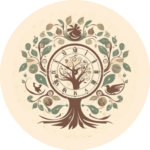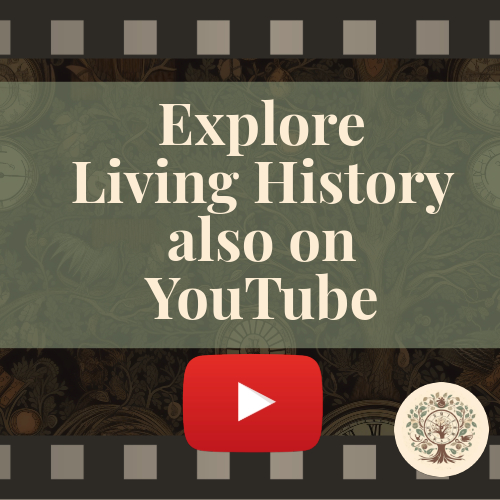If there’s one person who thought and wrote about penises a lot, it was Sigmund Freud (1856-1939), the ‘father of psychoanalysis’. Like many nineteenth-century intellectuals, Freud was interested in sex and sexuality, and how lived experiences shape our minds. For men like him (for it was mostly men who were writing about this subject), Greco-Roman antiquity was key to understanding what it meant to be human.
In the 1886’s reference book Sexual Psychopathy: A Clinical-Forensic Study (Psychopathia Sexualis: eine Klinisch-Forensische Studie), the Austrian-German psychiatrist Richard von Krafft-Ebing classified what he termed ‘sexual pathologies’, such as homosexuality, sadism and masochism, among others, using Latin vocabulary as his inspiration. However, while sexologists like Krafft-Ebing were interested in historical narratives from antiquity, Freud believed human sexuality could be better understood through myths, which were closer to the human unconscious. For psychoanalysis, these myths could describe things unknown even to ourselves: just think of the Oedipus complex, which is probably the first thing that occurs to us when we think of Freud. So, how did Greek mythology and sex come to play such an important role in Freud’s thinking, defining psychoanalysis in the process?

For both Freud and Krafft-Ebing, their interest in classic antiquity to explain human sexuality followed the eighteenth-century archaeological craze. The excavation of the Roman sites of Herculaneum and Pompeii had unearthed hundreds of artefacts of a phallic or sexual nature, including plenty of figures of ‘hermaphrodites’. Following these discoveries, many European intellectuals started to collect these phallic objects, as did museums. Also, following many archaeological finds, such as Heinrich Schliemann’s ‘discoveries’ of Troy and Mycenae, the nineteenth century saw the institutionalisation of archaeology. It was a period in which classical archaeology was becoming its own discipline, studied in museums and universities. It is no coincidence, then, that Freud often used archaeological analogies to describe psychoanalysis, such as ‘excavating the mind’. In his paper ‘The Aetiology of Hysteria’, Freud described how, just like archaeologists unearthed hidden ruins, so too could the psychoanalyst excavate the past, doing an archaeology of the mind.

But what about myths, which were so often depicted by nineteenth-century artists? Well, Freud described the stories patient told him about their childhoods as not unlike myths. Much like Greek mythology, he believed the stories we told ourselves were our own myths, which could tell much about ourselves. And the psychoanalyst could make sense of these stories with the help of classical mythology. And that brings me to one of psychoanalysis’ most fascinating concepts, the phallic mother. As the name suggests, this is a woman who lacks nothing, bringing together all possibilities of sex. Freud believed that, for children’s ‘normal’ development, this was an incredibly common fantasy, in which the mother could satisfy all needs. (It’s important to keep in mind that in this repressive Victorian period, it was mostly women who cared for babies and young children.) Later, through dealing with the Oedipus complex, they would develop their own sexuality. But where did these ideas come from? Well, archaeologists such as Arthur Evans had excavated what they deemed matriarchal deities in different sites, supporting the idea of a mythological and powerful mother.

Narcissus’ myth was also an inspiration for Freud’s thinking about homosexuality, which he developed in a 1910 sexual biography of Leonardo da Vinci. Leonardo’s memory/fantasy of wishing to be breastfed by his mother would have turned into a form of narcissism and, subsequently, homosexual desires. These desires were eventually sublimated through his artistic and scientific pursuits and the study of ‘mother nature’, a symbol for the phallic mother. According to him, homosexuals were attracted to themselves, becoming the objects of their attraction as they searched for the love their mother would once have provided. Queer theorists have critiqued and problematised these views in detail (you can read a summary here).

For me, Freud’s most illuminating idea is to understand children’s curiosity through the story of Oedipus and, especially, the passage where he needs to decipher the Sphinx’s riddle. This will to knowledge, the drive to learn, is what motivates children to be curious about learning. The child, just like Oedipus, tries to solve the ultimate mystery: where do babies come from? These ‘sexual theories of children’ would be the basis for adult curiosity. This innate curiosity has a universality to it and is easily relatable for us in the twenty-first century, just as it would have been for ancient Greeks.
This was the backdrop for Freud’s highly influential theories about sexuality. His thinking was shaped by the European interest in Greco-Roman antiquity in general, and the idea of ancient phallic worship, especially the collecting of phallic objects (‘phallicism’). Freud himself acquired many of these objects during a trip in 1902 to Pompeii, in ivory, faience, and bronze. His collection included more than 2500 of these objects. It is possible that these ancient phalloi, detached from the human body, came to highlight the role of the penis in his thinking. For historians, it is incredible to now have access to his collection. (You can see some of it at the Freud Museum in London until July 2023, and the digital archive will be available afterwards, too.)

Freudian psychoanalysis is the product of a rich cultural and intellectual history, which was influenced by medical theories and an overall interest in classical antiquity. It emerged during archaeological, philosophical, and medical debates about sexuality. Many of Freud’s theories were restrictive and a product of their time (they can be misogynistic, patriarchal, and heteronormative), yet they were highly influential in the development of feminism, queer theory, and gender studies. Ultimately, Freud’s goal was to unearth what it meant to be human. To do so, what better inspiration than the Greek myths?
* This text was revised by Paula Gruman, a clinical psychologist and doctoral researcher at the Université de Paris, and my fabulous sister.
References:
Sigmund Freud, ‘The Aetiology of Histeria’ (1896).
_____, Three Essays on the Theory of Sexuality (1905).
_____, Leonardo da Vinci and a Memory of his Childhood (1923).
_____, The Interpretation of Dreams (1900).
(Most of Freud’s writings can be found online; I recommend consulting the versions edited by James Strachey.)
Further Reading:
Rachel Bowlby, Freudian Mythologies: Greek Tragedies and Modern Identities (Oxford: Oxford University Press, 2007).
Daniel Orrells, Sex: Antiquity and its Legacy (London: Bloomsbury, 2015).
Almut-Barbara Renger, Oedipus and the Sphinx: The Threshold Myth from Sophocles through Freud to Cocteau (Chicago: University of Chicago Press, 2013).
Vanda Zajko and Ellen O‘Gorman (eds.), Classical Myth and Psychoanalysis: Ancient and Modern Stories of the Self (Oxford: Oxford University Press, 2013).




